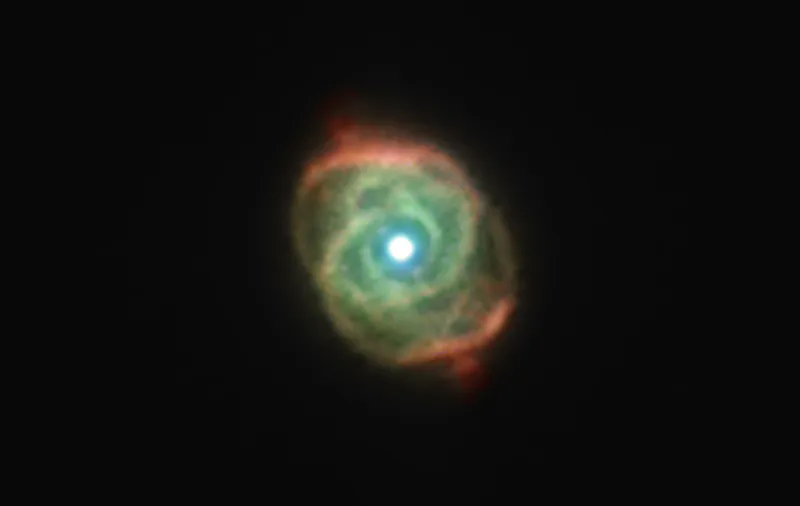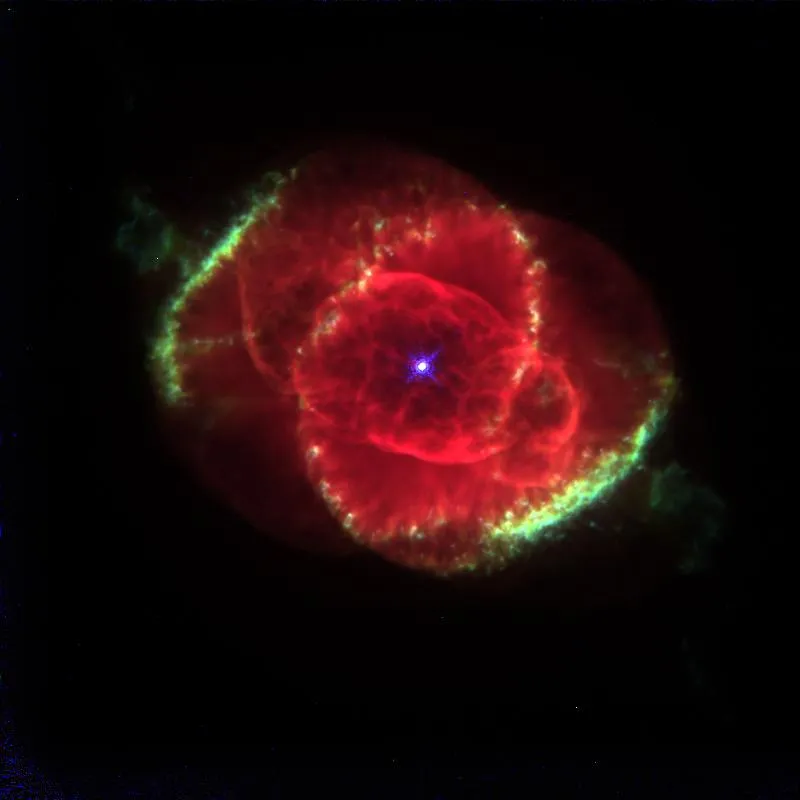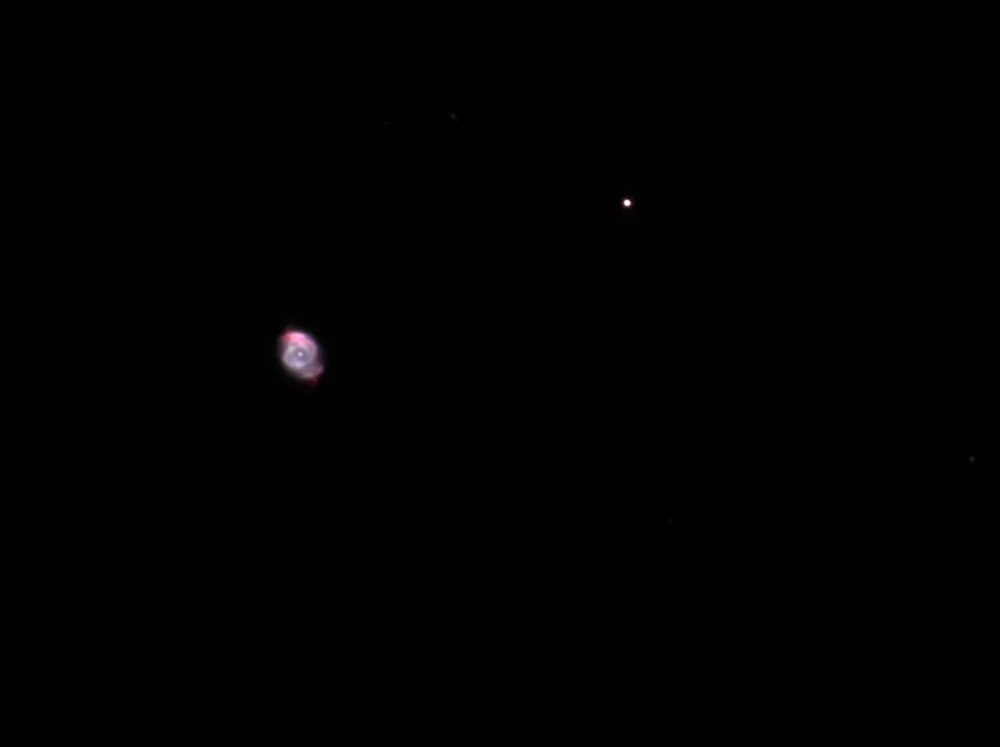The Cat’s Eye Nebula, also known as NGC 6543, is a planetary nebula located 3,000 lightyears away in the constellation Draco.
It was one of the first planetary nebula to be discovered, and is a wonderful example of this very special kind of cosmic cloud.
Planetary nebulae don’t actually have anything to do with planets: they’re called so because they often have a spherical, puffed-out appearance like a planet.

Planetary nebulae are one of the final stages of a Sun-like star, as they run out of fuel and begin losing their outer layers into space.
As a result, nebulae like the NGC 6543 give us a glimpse of our own Sun’s fate.
Is this what will happen to out Solar System in future?
The nebula's dying star

At the centre of the Cat's Eye Nebula is a dying Wolf Rayet star, the sort of which can be seen in the Webb Telescope's image of WR 124.
The Cat’s Eye Nebula’s central star shines at mag. +11.4.
Hubble Space Telescope images show a sort of dart board pattern of concentric rings emanating outwards from the centre.
These are shells of cosmic dust being ejected out into space.
Each ring that can be seen in the Hubble images is the edge of a one of these spherical shells expanding outwards.

Astronomers observing the Cat’s Eye Nebula with Hubble deduced that the star that produces the cosmic cloud ejects material in pulses of energy every 1,500 years or so.
Each dust shell ejected by the star contains about the same amount of mass as all the planets in our Solar System.
These expanding shell patterns could be a result of cycles of activity that the star is experiencing, just like our own Sun’s solar cycle.
Or perhaps the material is being ejected smoothly, but the rings are generated at a later stage by waves rippling through the expanding material.
How to see the Cat’s Eye Nebula

You can see the Cat’s Eye Nebula (NGC6543) from Earth by locating the constellation Draco and observing it through a small telescope.
This bright planetary nebula is a favourite of astronomers, given its interesting shape and structure.
Higher-powered telescopes will reveal a blue-green disc that is spectacular, and makes it really worth tracking the nebula down.
Find it within a loop of Draco, the Dragon, 7.2° west of mag. +3.1 star Altais.
The Cat's Eye nebula shines at mag. +9.8 and has an apparent diameter of 20 arcseconds.
It appears through smaller telescopes as a long smudge, but if you have steady seeing and a telescope over 200mm, you could use high magnification and averted vision to see if you can see faint detail in the inner regions.
Photographing the Cat’s Eye Nebula

The simplest camera set-up for photographing a planetary nebula is probably a DSLR camera and a medium focal-length lens on a static tripod.
The Cat’s Eye Nebula is just about bright enough that, if you can get to reasonably dark skies, you should be able to pick up signs of it with that setup.
Try a star trail-style shot, in which you take multiple long-ish exposures – 30-seconds at least – and stack them together with star trail-creation software.
You should see that the Cat’s Eye Nebula stands out from the stars as a greenish-blue arc.

